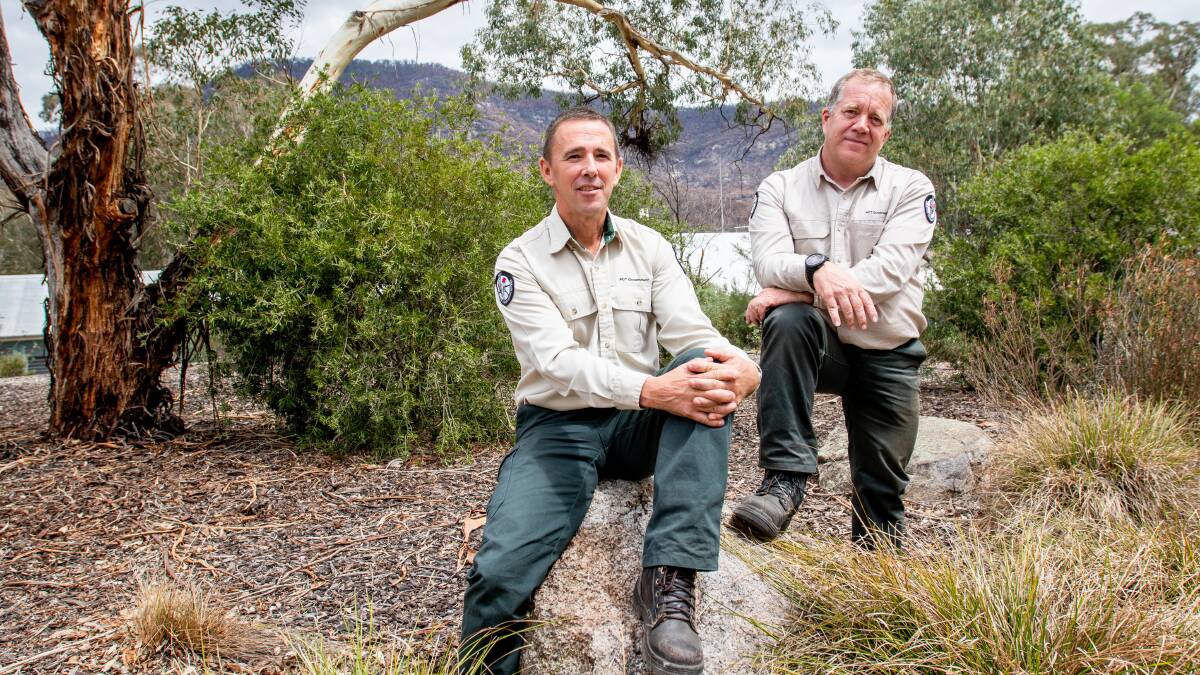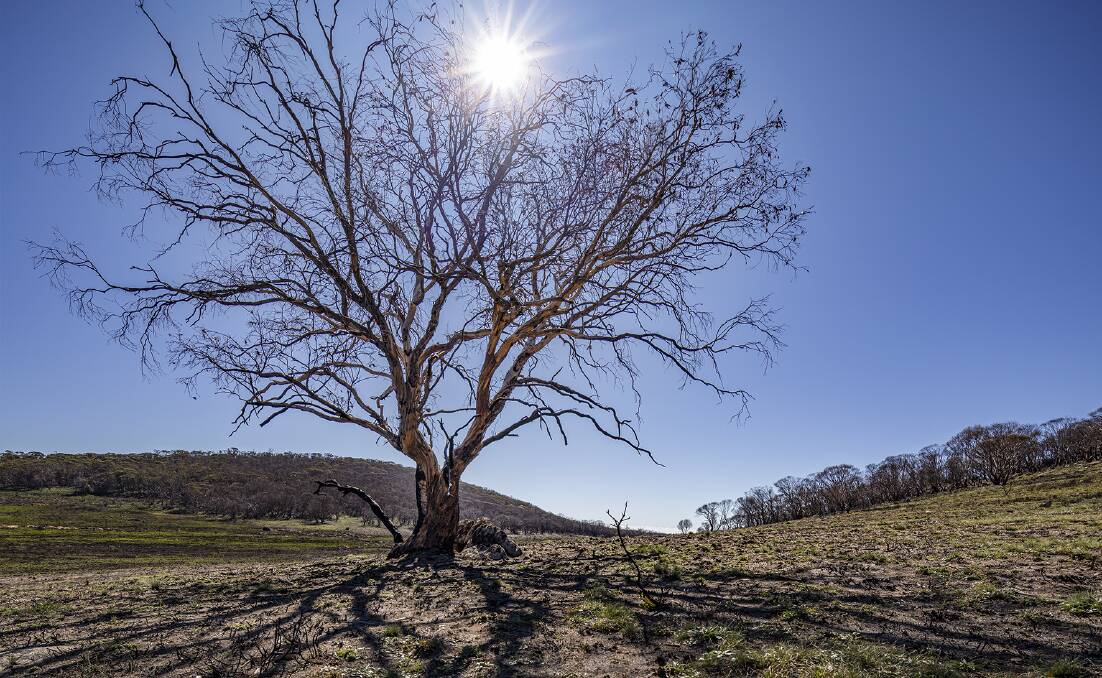
Mature-aged native forest may never return to parts of Namadgi National Park with climate change impacting regeneration two years on from the Orroral Valley bushfires.
Peter Cotsell has led recovery efforts in the aftermath of the 2020 bushfires sparked by a Defence helicopter on January 27.
He said under normal circumstances they would expect to see the park return to its natural glory.
"But when you bring in the changes we're experiencing and projections of more regular bushfires and more intense floods, we might see the park change completely," Mr Cotsell said.
A week before the fire that burned 80 per cent of Namadgi was officially declared out, a team of 13 went on a five-day deployment to assess the damage.
The ACT Parks team identified 27 risks to cultural heritage, public safety and ecological communities.
The monetary cost of recovery was estimated at around $10 million.
Mr Cotsell said on his first venture into Namadgi there was definitely a feeling of shock.
"It was quite devastating in that a lot of the park was just burnt sticks," he said.
"There was a lot of sediment moving throughout the park, lots of erosion and little sign of recovery in those first few weeks."

How it happened
The fire started on a Monday at 1.49pm in the remote Orroral Valley, with grassland set ablaze by an overheated landing light from a Defence helicopter.
Over the next three days the fire grew approximately 4500 to 8000 hectares per day - around 2250 and 4000 football fields.
By Friday, Chief Minister Andrew Barr had declared a state of emergency for the ACT, announcing the combination of extreme heat, wind and a dry landscape would put Canberra suburbs at risk.
As temperatures continued to soar the fire spread at up to three times the rate in the following days, predominantly in the southeast where it jumped the NSW border and became the Clear Range fire.
While the threat to Tuggeranong didn't eventuate, the devastation to Namadgi was vast with 82,700 ha burned including impacts across the Cotter River Catchment and 22 per cent of Tidbinbilla Nature Reserve.
We might see the park change completely.
Peter Cotsell
The impact
Approximately 84 kilometres of walking track and 19 visitor spots, including camping grounds, picnic areas and car parks were located within the burnt area.
Access to the Gudgenby area at Yankee Hat car park sustained significant fire damage and two of the parks huts, Demandering, and Max and Bert Oldfield's, were completely destroyed in the blaze.
ACT Parks are now working with the National Parks Association and Kosciuszko Huts Association to determine whether the best way to preserve their heritage significance is through a new design or an interpretation of what was lost.
ACT Parks has applied for around $6 million in Commonwealth funding through the Black Summer initiative for projects including engagement with the Ngunnawal community in park management and major infrastructure projects.
Mr Cotsell said Namadgi was currently going through what was called Succession Theory where the park had responded to the bushfires and was in a transitional state.
"We're seeing quite open woodlands because a lot of canopy has been burned," he said.
Mr Cotsell said while the scarcity of shade impacted regrowth, they had begun to see more grasses and flowers emerge and would soon see the movement of more reptiles.
Programs were under way to control invasive species like rabbits, pigs and deer while the park transitioned, Mr Cotsell said.
"The species probably most at threat are our alpine ash which don't respond well to fire," he said.
"Under a climate change scenario where it tends to get warmer those ecosystems are likely to shrink throughout the park."
With tall canopy coverage only just returning in 2020 following the fires in 2003, it is thought the bushfire cycle could prevent the aged-class forests return.
Mr Cotsell said while La Nina was making access difficult, they welcomed the wet.
"In terms of natural regeneration it's been an overwhelmingly positive response," he said.
An inquiry
Despite Mr Barr declaring he was not interested in a "witch hunt" to determine the cause of the Namadgi fire.
Chief Coroner Lorraine Walker declared an inquiry would be held, examining the time between the ignition of the fire and the subsequent communication of its location to the ACT ESA.
Emergency Services Minister Mick Gentleman said people from both the Environment and Planning Directorate, as well as the Emergency Services Agency would be taking part.
Mr Gentleman said the coroner would make a very limited inquiry, given it was a look at the 45 minutes from when the fire began.
READ ALSO:
-
'It does worry me': Climate plan man concerned change is too slow
- Murrumbidgee infrastructure upgrade a waste of taxpayers money, environmental groups say
"Of course, we knew well about it by then," Mr Gentleman said.
"After about 15 minutes, our towers had spotted it and we had already set out crews prior to that occurring."
A second directions hearing will be held on May 9 after an initial hearing on January 19. The hearing itself will be held in July with findings likely reported some months later.
A spokesperson said Defence was co-operating with the inquiry but as the matter was before the coroner, it would be inappropriate to provide further comment.







